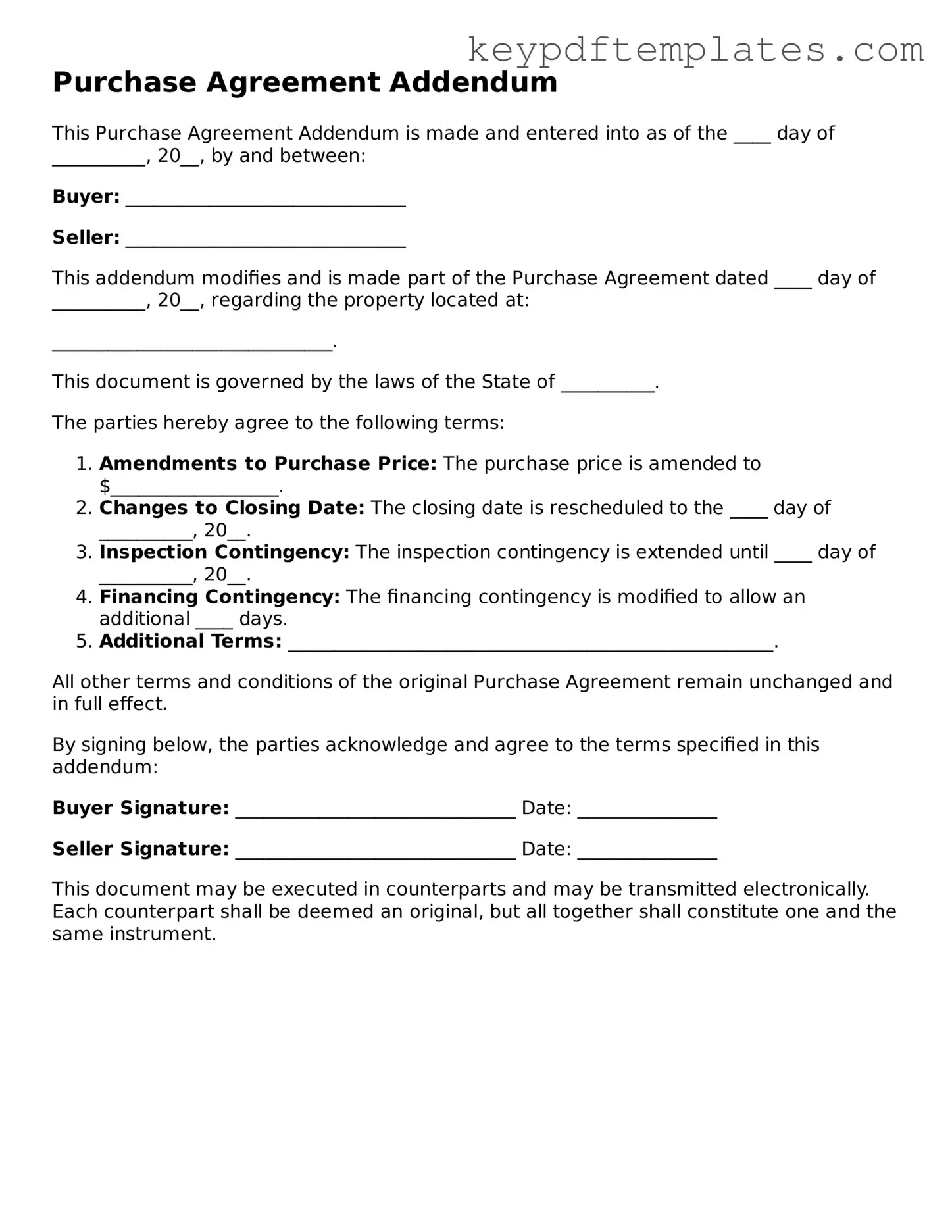Printable Purchase Agreement Addendum Template
The Purchase Agreement Addendum is a document that modifies or adds terms to an existing purchase agreement. This form allows buyers and sellers to clarify specific conditions or contingencies related to the sale. Understanding its purpose and proper use is essential for ensuring a smooth transaction process.
Modify Document Online
